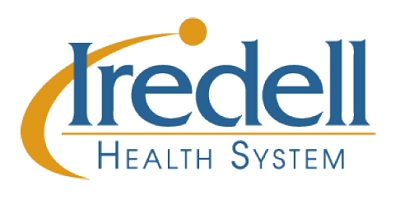
Special to Iredell Free News
That leg pain you experience while exercising may seem like no big deal. However, this often-ignored pain can be an indication of a much more serious condition.

“Nearly 10 million Americans have peripheral artery disease, and many of them may not even know they have it,” said Megan Purser, nurse practitioner at Iredell Wound Care & Hyperbaric
Center.
Peripheral artery disease (PAD) often goes undetected until more severe complications occur — and sometimes it may be too late.
September is PAD Awareness Month — the ideal time to learn more about this often undiagnosed yet life-altering disease.
What is PAD?
PAD is a circulation problem that can cause you to have trouble walking or even raise your risk of limb loss. It occurs when the arteries, the vessels that carry blood away from your heart, usually in your legs, develop a fatty build-up and cause a partial or completely blocked blood flow.
PAD can put you at risk for several other serious health complications, including cardiovascular disease, severe wounds, and limb loss.
With PAD comes an increased risk for heart attack and stroke, as it is an indicator that other arteries in your body may be blocked, limiting your blood flow.
Because of the decreased blood flow, PAD also makes you susceptible to non-healing wounds and sores.
“Without adequate blood flow, not enough oxygen gets to your skin. When your skin does not get enough oxygen, it can become thin and fragile. Even just a small injury, like bumping your leg, can become serious if your body does not have the oxygen needed to heal the wound,” said Purser.
In extreme cases, severe blood-flow problems may even put your leg at risk for amputation.
According to Purser, 25 percent of people with advanced PAD may require an amputation within only one year.
What increases your chances of developing PAD?
Several modifiable factors raise your risk for developing PAD. These include diabetes, high blood pressure, high cholesterol, smoking, and a non-active, sedentary lifestyle.
Smoking is one of the greatest risk factors for PAD. Smoking can damage and tighten your blood vessels, which limits circulation, and may contribute to other PAD risk factors like high blood pressure and high cholesterol.
Non-modifiable risk factors, those factors you cannot change, include family history or age over 65.
While PAD can develop at any age, your risk rises as you get older.
What are the symptoms and signs of PAD?
As a result of PAD, decreased blood flow may cause cramping, fatigue, or discomfort in your legs or buttocks that can affect your walking ability. This is a warning sign that your muscles are not getting enough blood to meet the extra demand of being active.
“This type of pain usually worsens with activity and may improve with rest,” said Purser.
According to Purser, other symptoms of PAD include:
• Discolorations of the foot, usually a pale or blue tint
• Shiny skin with little hair on legs
• Changes to nail growth
• Decreased pulses in the feet
• Sores on the toes, feet, and legs that can develop without an injury and may be difficult to heal
However, there is a chance you may have no noticeable symptoms and still have PAD.
“Unfortunately, patients can sometimes have no apparent symptoms. The first thing they notice might be a wound that will not heal,” said Purser.
“This is one of the reasons why PAD can be scary. It’s important to promote PAD awareness so people can keep an eye out for some of the more subtle changes,” she added.
Should I get screening for PAD?
Since you may have no symptoms of PAD, or might simply mistake your leg pain for something else, it is important to get screened.
According to Purser, if you have any concerning symptoms, you should get screened. If you have no symptoms but have risk factors, including a family history of PAD, you should start screening around age 50.
An ABI test, along with a physical exam, can help determine if you have PAD. An ABI test is painless and only takes a few minutes. During it, the provider compares the blood pressure in your legs to the blood pressure in your arms.
“Those with PAD are at increased risk of heart attack, stroke, and damage to the kidneys. Early diagnosis and intervention can reduce the severity of your symptoms, slow disease progression, and increase your quality of life,” she said.
Purser encourages you to take your socks off at your next primary care appointment so your provider can actually see and examine your feet and legs.
How is PAD managed?
Fortunately, if you do have PAD, treatment and healthy lifestyle changes can help you manage it and reduce your risk for other complications. But, like other chronic conditions, managing PAD takes effort and willingness to change.
“The best way to control PAD, especially in the early stages, is to control some of your risk factors by making lifestyle changes,” said Purser.
Choose a healthy diet, exercise regularly, and if you smoke, try to quit now.
If you have leg pain, alternate periods of exercise and rest to build up the amount of time you can walk before pain starts. Your primary care provider can help you develop an exercise program that will work best for you and your specific symptoms.
“Work with your primary care provider to increase your activity and manage your blood pressure and cholesterol. Your provider may also talk to you about medications to help control symptoms,” she said.
LEARN MORE
Megan Purser practices at Iredell Wound Care & Hyperbaric Center located at 1714 Davie Avenue in Statesville. If you have PAD and notice a non-healing, or chronic, wound, Iredell Wound Care can provide you with the advanced, specialized treatments required for optimal healing. Please call 704-768-0542 to schedule your appointment. If you would like to learn more, visit iredellwoundcare.com.
About Iredell Health System
Iredell Health System includes Iredell Memorial Hospital; Iredell Mooresville; Iredell Home Health; Iredell Wound Care & Hyperbaric Center; Community and Corporate Wellness; Occupational Medicine; the Iredell Physician Network and more. Iredell Memorial Hospital is the largest and only nonprofit hospital in Iredell County. The comprehensive healthcare facility has 247 beds; more than 1,700 employees; and has 260 physicians representing various specialties. Centers of excellence include Women’s and Children’s; Cardiovascular; Cancer; Surgical Services and Wellness & Prevention. The Health System’s newest campus, Iredell Mooresville, is home to the area’s only 24-hour urgent care facility, as well as an ambulatory surgery center, imaging center, rehabilitation services, and physician practices. The mission of Iredell Health System is to inspire wellbeing. For a comprehensive list of services and programs, visit www.iredellhealth.org.



